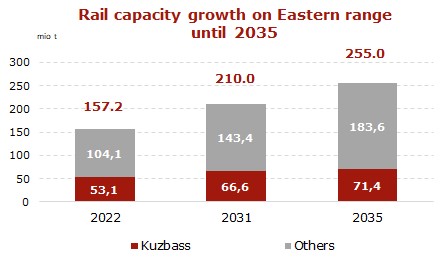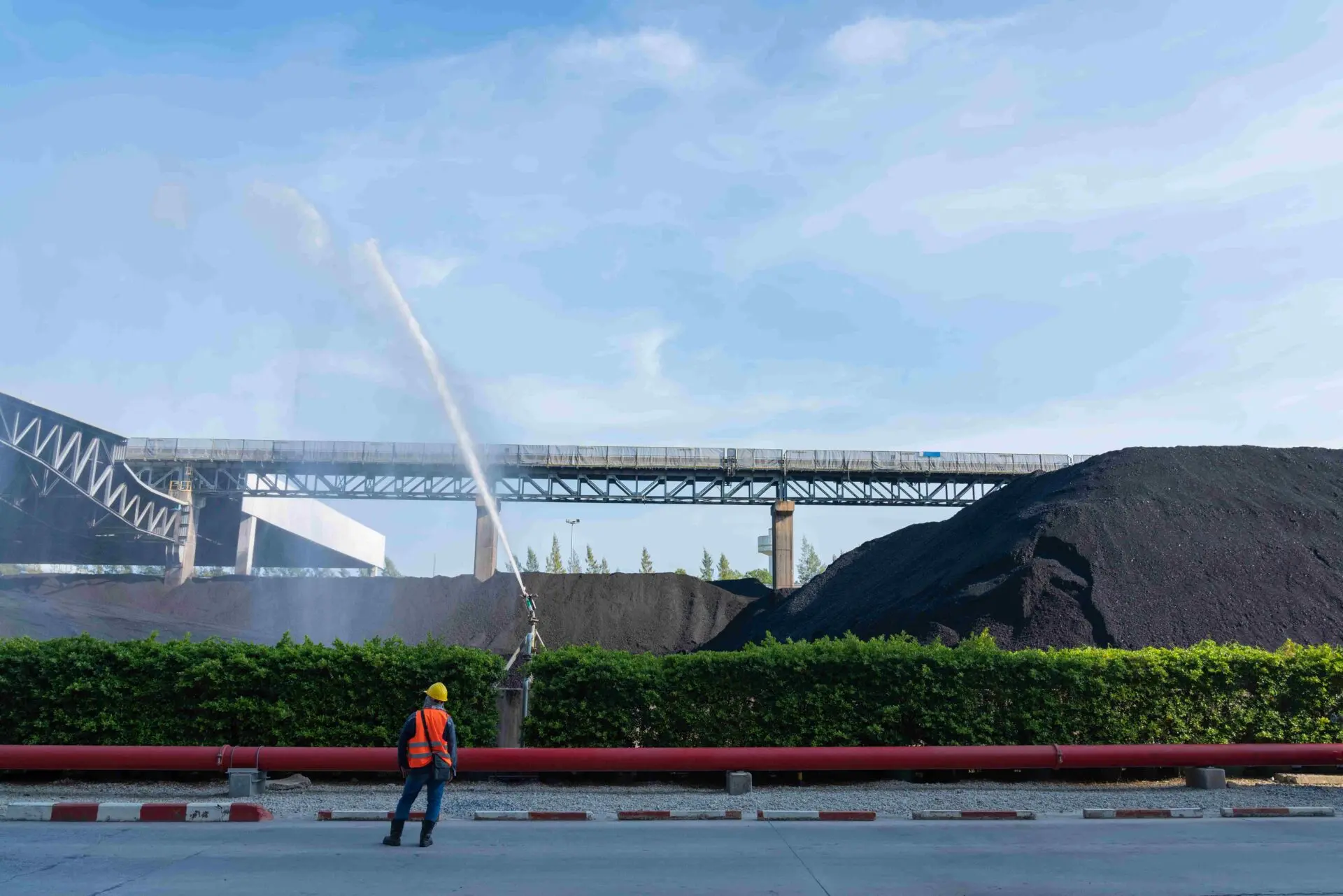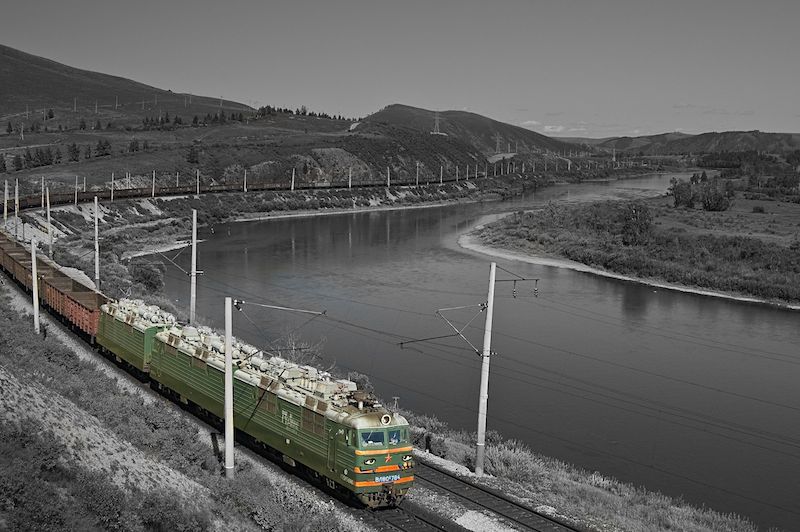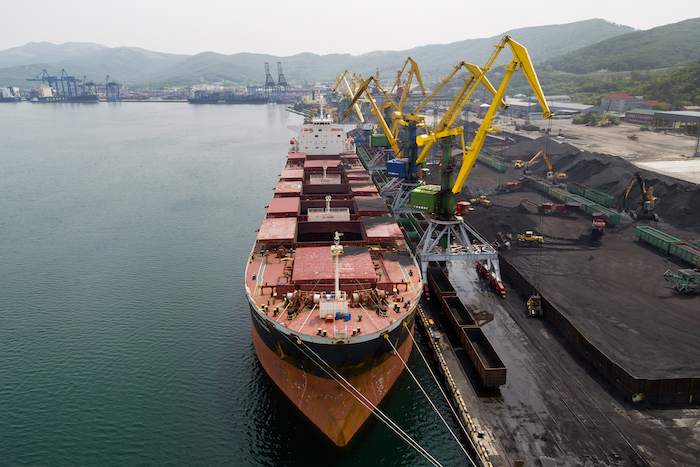

Given the current shift in export destinations, market participants are trying to assess the potential for increasing the throughput capacity of Russian railroads on the Eastern range, as the limited carrying capacity hinders the growth of exports to the Asia Pacific.
The expansion of the Eastern range is being implemented in three stages.
The first stage has already been completed in 2021 at the level of 144 mio t, the second stage envisages expansion to 180 mio t in 2024.
Preliminary options for the third stage (not yet approved) assume an increase to 210 mio t by 2031, and also include further growth up to 255 mio t by 2035.

Thus, coal supplies from Kuzbass may rise to 71.4 mio t by 2035 (+18.3 mio t or +34.5% vs. 2022), shipments from other regions are estimated at 183.6 mio t (+79.5 mio t or +76.4% vs. 2022). The total volume of coal transportation by 2035 is expected to add 97.8 mio t or 62.2%.
Nevertheless, according to the indicative forecast of the Ministry of Transport and Russian Railways (RZD), even in the case of increasing the railway capacity of the Eastern range () to the maximum figures equivalent to 255 mio t in 2035, the demand for rail freight transportation will be significantly higher than the projected numbers.
According to some estimates, coal shipment plans for 2030-2035, currently claimed by Russian suppliers, exceed the expected development of Baikal-Amur Mainline and Trans-Siberian Railway (BAM and TSR) by about 50%.
Russian ports of the South and North-West could become an additional direction alternative to the Eastern range for Kuzbass, however, the port of Taman, due to bottlenecks on RZD railway network, is presently loaded by a third, while the growing transportation costs, including railroad tariffs, as well as risks are hindering the growth of exports from ports of the Baltic and the Barents Seas.
Source: CAA













